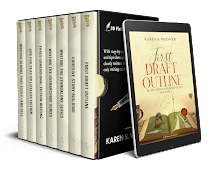I don't need to summarize the plot of Richard Matheson's I AM LEGEND (1954), since Karen did it so thoroughly last week. If your only acquaintance with this classic, the prototypical treatment of vampirism as disease, comes from the blockbuster movie, be sure to read the book and get the story the way the author intended. Aside from the influence of the novel on Romero’s NIGHT OF THE LIVING DEAD, Matheson’s seminal work has been filmed twice before, as THE LAST MAN ON EARTH with Vincent Price and THE OMEGA MAN with Charlton Heston. THE LAST MAN ON EARTH comes closest of all to the original book, since Matheson worked on the screenplay, but because he was displeased with changes that were made (including the ending) he appears in the credits only under a pseudonym. The Will Smith movie also changes the ending, along with many other alterations that deviate from Matheson’s story. In this film, Robert Neville becomes a “legend” by giving his blood to create a cure for the disease, essentially the opposite of why he attains “legend” status at the end of the book.
Unlike the Robert Neville of that movie, a black scientist in an urban setting, Neville in the book is a white, middle-class man barricaded in his house in the ruins of the suburb where he lived before losing his family to the vampire plague. He isn’t a scientist (one change in the movie that may be for the better, since movie Neville’s research into the disease is more believable in view of his role in creating it in the first place). He teaches himself enough bacteriology to identify the disease organism in the blood of the vampires he destroys. The suspected cause of the pandemic is fallout from nuclear weapons tests, so that Matheson’s novel reflects the dominant anxieties of its time (just as the Will Smith movie reflects the dominant anxieties of ours, with zombie-like hordes engendered by biological engineering gone wild). Dust storms spread the vampire bacterium, apparently mutated by radiation from an organism transmitted solely by biting into one whose dormant spores can be carried through the air. Neville figures out the bacteria must be anaerobic; when they come into contact with air, they instantaneously consume their host. That hypothesis explains why stakes kill vampires. The effects of sunlight and garlic are also scientifically justified. Vampires’ reactions to crosses and mirrors, on the other hand, are psychosomatic. Brain-damaged revenants crawling out of their graves expect to suffer the vulnerabilities of vampires as understood in popular culture, so they cower from holy symbols and can’t see their own reflections. Some superstitions are nothing but that, such as the inability to cross running water. The vampires besieging Neville’s house every night mock his experimental attempt to protect himself with running water. Although vampires can’t really change shape, some jump off high places under the delusion of turning into bats. Neville has run into vampire dogs, but they’re just dogs.
To me, the most fascinating dimension of the novel is its detailed rationalization of vampirism in terms of infectious disease, something sadly missing from the film (which retains hardly any vampiric content at all -- the revenants are more like Romero zombies). Emotionally, the strongest sequence consists of Neville’s nightly ordeal as he watches the vampires, some of them his former neighbors, gathered on his lawn, taunting him, waiting for him to break down and surrender. His bitter monologues as he pores over Stoker’s DRACULA and a collection of medical textbooks vividly convey his deterioration from a civilized man into a ruthless survivor. Eventually, as Karen mentioned, he stumbles upon a woman who claims to be another survivor. It turns out she belongs to a group of people whose bodies have achieved symbiosis with a further mutated strain of the disease. Neither dying nor turning feral, they are building a new society. Neville, for them, is the “plague” stalking in the night to kill them one by one. In the final scene, he realizes that as the last “normal” man on Earth, he has become a “legend” for the new race of humanity -- who are now the normal ones and he the monster.
In addition to Theodore Sturgeon’s SOME OF YOUR BLOOD (which I discussed on September 18), I consider I AM LEGEND one of the four classic pre-1970 twentieth-century vampire novels. The other two are DOCTORS WEAR SCARLET (1960), by Simon Raven, and PROGENY OF THE ADDER (1965), by Leslie H. Whitten. I commented on these works and many others in “A Gravedigger’s Dozen of Outstanding Vampire Tales,” an overview (updated to the late 1990s) of what I see as the best vampire novels of all time. The “gravedigger’s dozen” allusion means thirteen, of course, but I cheat on the number:
Vampire Reading ListMargaret L. Carter
Please explore love among the monsters at Carter's Crypt.





































